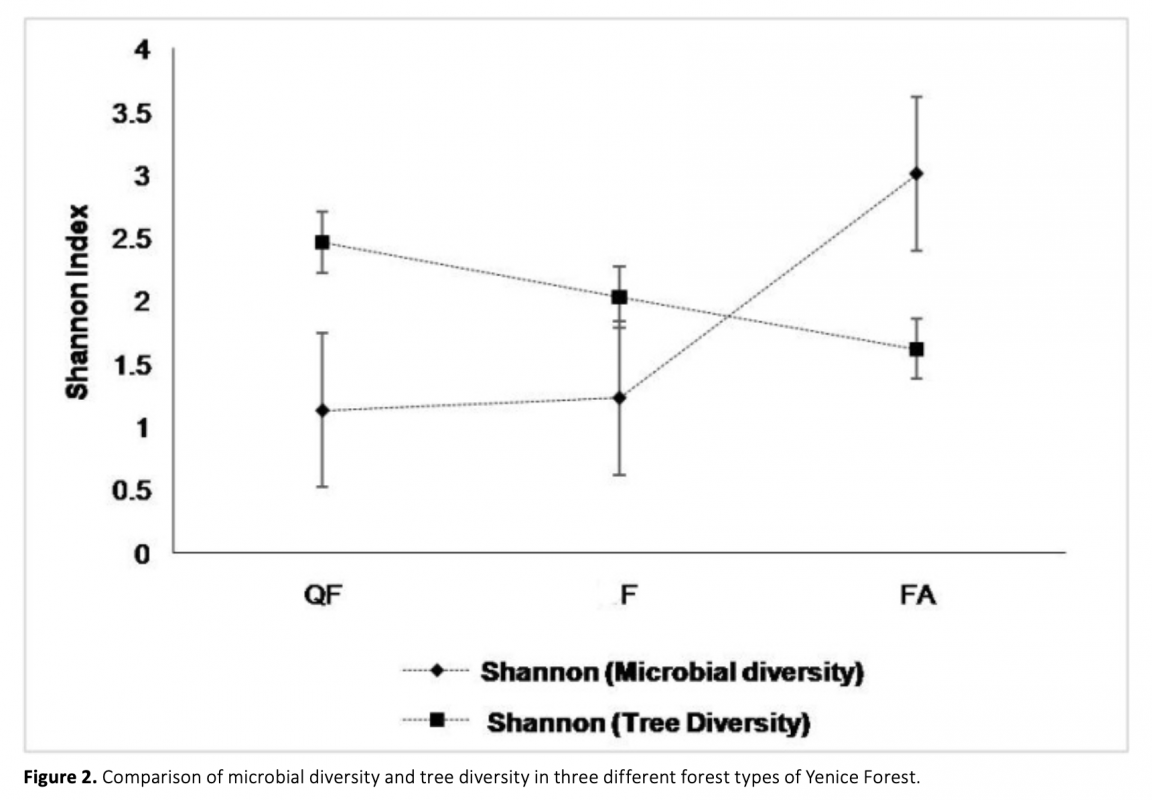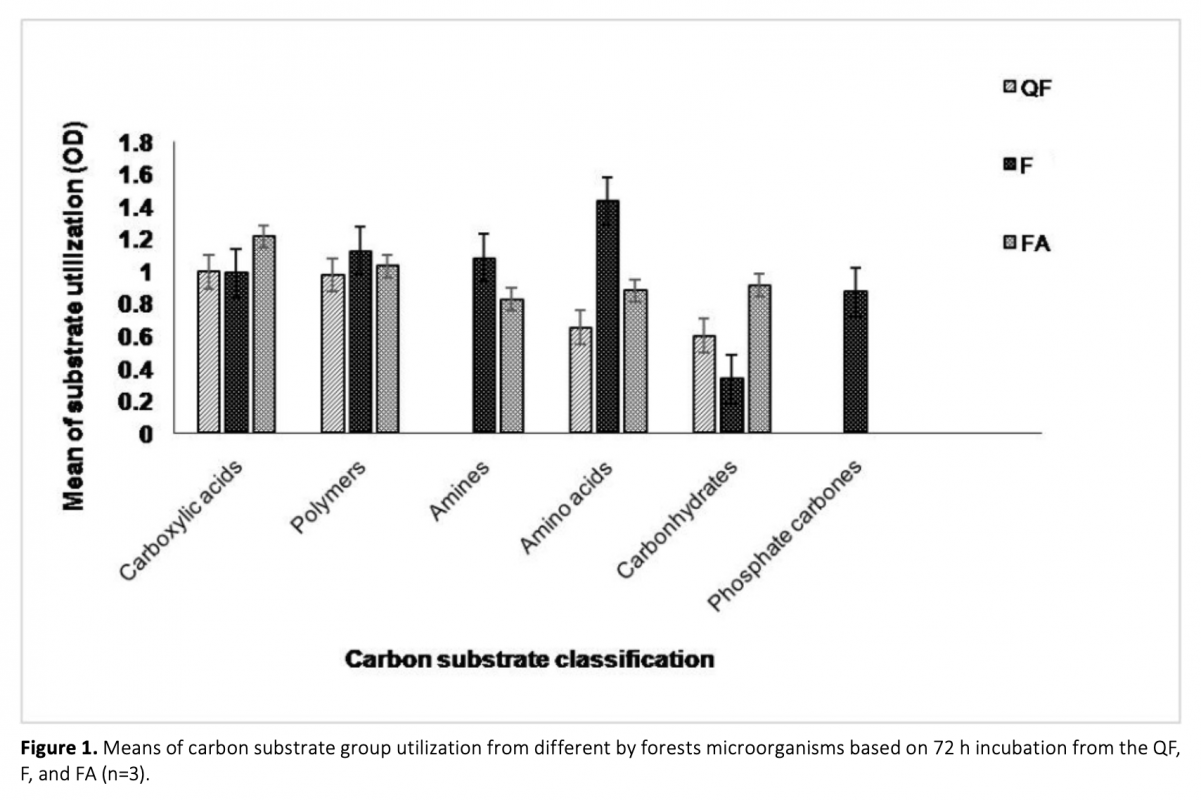The present study identifies the hot spot of Yenice and aims to determine the tree diversity in the Fagus-Abies, Fagus, and Quercus-Fagus forests, to define the microbial community in these forests by the Biolog-Ecoplate method and to reveal the physiological profile differences at the community level between forests. Accordingly, soil samples were taken from these predefined forests and the microbial community in different forest communities was analyzed using the Biolog EcoPlate method. In addition, cover-proportion values of the tree species were determined according to Braun-Blanquet method. As a result, the diversity in microbial communities has been determined as Fagus-Abies (3.0033 ± 0.006), Fagus (1.2267 ± 0.006), and Quercus-Fagus (1.1267 ± 0.012), from highest to lowest, respectively. On the other hand, the fact that the diversity of carbon sources in the Fagus forest was quite high and the use of phosphate carbon is seen only in this type of forest is quite significant. In the present study, the Biolog Ecoplate method was applied for the first time to determine the microbial community among forest communities. The results obtained from the present study clearly show the practicability and effectiveness of this method in forest communities. Meanwhile, the determination of the microbial community will contribute to the development of new strategies for establishing ecosystem protection practices.
Çalışmamızda; Yenice sıcak noktası tanımlanmış Fagus-Abies, Fagus ve Quercus-Fagus ormanlarındaki ağaç çeşitliliğinin saptanması, bu ormanlardaki mikrobiyal komünitenin Biolog-Ecoplate metodu ile belirlenmesi ve ormanlar arası komünite düzeyinde fizyolojik profil farklılıklarının ortaya konması amaçlanmıştır. Bu kapsamda; Önceden tanımlanmış bu ormanlardan toprak örnekleri alınarak Biolog EcoPlate yöntemi kullanılarak farklı orman topluluklarındaki mikrobiyal komünite analiz edilmiştir. Bunun yanında; ağaç türlerinin örtüş-bolluk değerleri Braun-Blanquet yöntemine göre belirlenmiştir. Sonuç olarak; mikrobiyal komünitelerindeki çeşitlilik en fazla Fagus -Abies (3,0033±0,006)’da daha sonra sırasıyla; Fagus (1,2267±0,006) ve Quercus-Fagus (1,1267± 0,012) şeklinde belirlenmiştir. Öte yandan; Fagus ormanında karbon kaynağın çeşitliliğinin oldukça fazla olduğu ve fosfat karbonunun kullanımının yalnızca bu tip ormanında görülmesi de oldukça önemlidir. Çalışmamızda, Biolog Ecoplate yöntemi ilk kez orman toplulukları arasındaki mikrobiyal komünitenin belirlenmesi amacıyla uygulanmıştır. Çalışmamızdan elde edilen bulgular, söz konusu yöntemin orman topluluklarındaki uygulanabilirliğini ve etkinliğini açıkça göstermektedir. Aynı zamanda; mikrobiyal komünitenin de belirlenmesi ekosistem koruma uygulamaları oluşturulmasına yönelik yeni stratejilerin geliştirilmesine katkı sağlayacağı düşünülmektedir.




Download Article in PDF (500.1 kB)